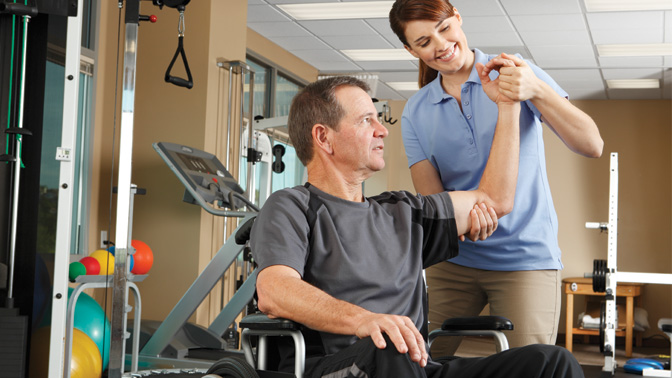
It’s easy to spot the obvious. For example, it is not difficult to imagine that people who experience physical trauma, such as serious falls or car accidents, might become paralyzed as a result of injury to their spinal cord.
What’s less obvious are the other ways in which the spinal cord can become damaged, such as that caused by degenerative diseases, tumours or cardiovascular conditions. These conditions are known as non-traumatic spinal cord dysfunction.
“Because these dysfunctions are caused by a broad group of unrelated conditions, they are hard to identify and are not well studied,” explains Dr. Susan Jaglal, who is a Senior Scientist at the Toronto Rehabilitation Institute. “Without true estimates of how many people are affected, we cannot begin to fulfill the needs of these individuals. To address this issue, my colleagues and I initiated a large scale study to develop a way to better identify those affected by non-traumatic spinal cord dysfunction.”
The research team examined administrative health data from approximately 23,000 Canadians who were hospitalized between 2004 and 2011 for paralysis. Using these records, they developed a series of criteria to identify people affected by non-traumatic spinal cord dysfunction based on their reasons for hospitalization.
The criteria that they developed were 97 per cent accurate in classifying individuals. Using these criteria to categorize the various cases revealed that the most common causes of dysfunction were degenerative disease and infection. The team also found that older individuals and women are more likely to be admitted to the hospital for non-traumatic spinal cord dysfunction.
Dr. Jaglal adds, “Our study is the first to demonstrate that using nationwide administrative health data is a feasible approach to categorize people with these dysfunctions. With more research, we will be able to gain a more complete picture of those affected—findings that will inform the development of new ways to improve the delivery of care.”
These works were supported by the Rick Hansen Institute, the Ontario Neurotrauma Foundation, Health Canada, Western Economic Diversification Canada, the Canadian Institutes of Health Research, Brain Canada Foundation, Alberta Paraplegic Foundation, University of Calgary Hotchkiss Brain Institute, University of Alberta Neuroscience and Mental Health Institute, Alberta Health, Alberta Health Services and the Toronto Rehab Foundation.
Jaglal SB, Voth J, Guilcher SJT, Ho C, Noonan VK, McKenzie N, Cronin S, Thorogood NP, Craven BC. Creation of an algorithm to identify non-traumatic spinal cord dysfunction patients in Canada using administrative health data. Top Spinal Cord Inj Rehabil. 2017 Fall. doi: 10.1310/sci2304-324.
Ho C, Guilcher SJT, McKenzie N, Mouneimne M, Williams A, Voth J, Chen Y, Cronin S, Noonan VK, Jaglal SB. Validation of algorithm to identify persons with non-traumatic spinal cord dysfunction in Canada using administrative health data. Top Spinal Cord Inj Rehabil. 2017 Fall. doi: 10.1310/sci2304-333.
Guilcher SJT, Voth J, Ho C, Noonan VK, McKenzie N, Thorogood NP, Craven BC, Cronin S, Jaglal SB. Characteristics of non-traumatic spinal cord dysfunction in Canada using administrative health data. Top Spinal Cord Inj Rehabil. 2017 Fall. doi: 10.1310/sci2304-343.




